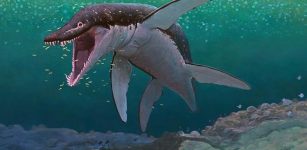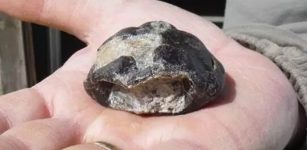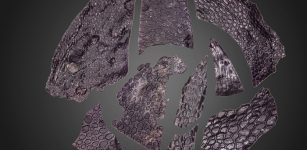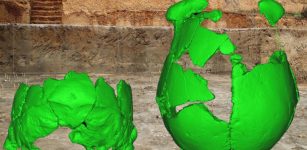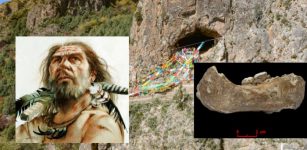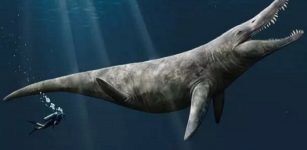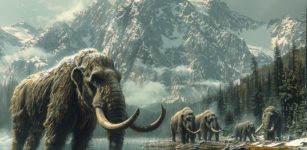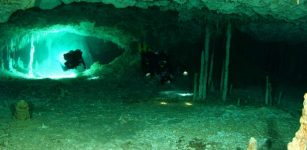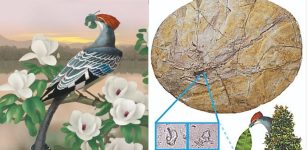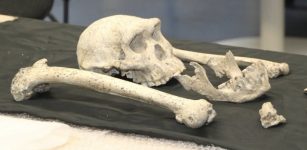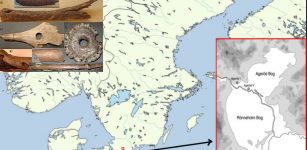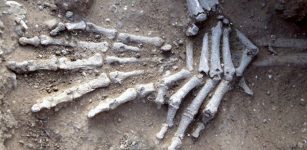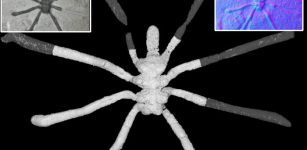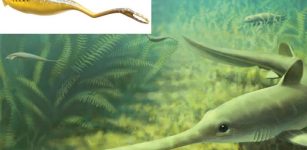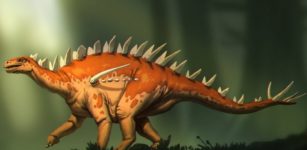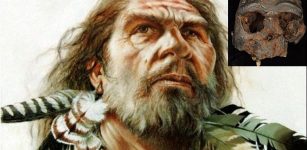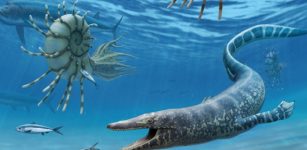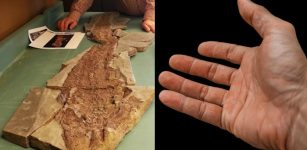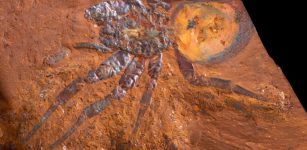A Giant New Species Of Long-Necked Herbivorous Dinosaur Discovered By Argentine Paleontologists
Conny Waters - AncientPages.com - A team of Argentine paleontologists discovered a new herbivorous species of giant dinosaurs that lived about 90 million years ago.
A team of Argentine paleontologists find giant fossil remains of herbivorous dinosaur. Image credit: La Nación (GDA)
This gigantic animal lived in the forests with lakes and lagoons that were located on what are now dry plateaus in the Patagonian north. The bones of the long-necked specimen Chucarosaurus diripienda (as it was named), recovered in the province of Río Negro (Argentina) weigh more than 100 kilos.
The paleontologists consider their size is "huge" and one of the largest ever discovered.
The discovery occurred in 2019, during an expedition to the Pueblo Blanco Nature Reserve, located about 25 kilometers south of the Village of El Chocón, in Argentine Patagonia.
Patagonia was once a habitat to ”the world's largest plant-eating dinosaurs. such as the colossal Patagotitan mayorum, the biggest dinosaur ever discovered, though scientists still do not know why species there grew so fast and in some cases never stopped growing throughout their lives,” wrote Reuters.
A bone that belonged to a "Chucarosaurus Diripienda", a newly discovered gigantic species of long-necked herbivorous dinosaur, is pictured next to a shovel, in Pueblo Blanco Nature Reserve, in Rio Negro, Argentina October 16, 2019. Nicolas Chimento/Museo Argentino de Ciencias Naturales/Handout via Reuters
“On the way to the laboratory, the weight of the fossil remains caused the van that was transporting them to become unstable and overturned. However, there were no injuries and the bones were intact, which gave paleontologists an idea of their resistance.
The name assigned to it honors that: Chucarosaurus for "strong lizard“ and diripienda for ”scrambled" and in reference to the incident during the trip,” according to El País.
Some 140 dinosaur species have been unearthed in Argentina, which ranks among the world's top three countries for research and discoveries alongside China and the United States.
Illustration of the giant dinosaur Chucarosaurus diripienda. Image credit: Sebastián Rozadilla - La Nación
At 50 tons and 30 meters in length, the Chucarosaurus is the largest-ever dinosaur discovered in Argentina's mountainous Rio Negro province. It most probably lived in the Late Cretaceous period accompanied by predators, fish and sea turtles.
The dinosaur's ' femur bone (about two meters high), was split into three parts, each weighing more than 100 kilograms.
It required at least three people to lift it up. In fact, it was the femur bone that allowed the team to calculate the dinosaur's approximate size of about 30 meters in length and 40-50 tons.
The Chucarosaurus is one of the largest known dinosaurs. Paleontologist Matias Motta said that while the Chucarosaurus, a sauropod, rivaled other Patagonian giants in size and weight, characteristics in its hips, forelimbs and hindlimbs suggested it was more slender and graceful.
A paleontologist works in an excavation of bones and remains that belonged to a "Chucarosaurus Diripienda", a newly discovered gigantic species of long-necked herbivorous dinosaur, in Pueblo Blanco Nature Reserve, in Rio Negro, Argentina October 16, 2019. Nicolas Chimento/Museo Argentino de Ciencias Naturales/Handout via Reuters.
The researchers' recent discovery include a total of six pieces, which correspond to the limbs on the left side of the body of this colossus: an ischium, two femurs, a complete humerus, a tibia and a radius.
"Recently, remains of the small Overoraptor chimentoi, a dinosaur with long arms similar to the wings of birds, and other reptiles that lived in the shadow of dinosaurs, such as crocodiles, turtles and the tuatara Patagosphenos, were found.
But, among this large number of types of animals discovered, herbivorous dinosaurs had not yet been found,” explained the team of researchers, which is composed of Federico Agnolín, Bernardo González Riga, Alexis Aranciaga Rolando, Sebastián Rozadilla, Matías Motta, Nicolás Chimento and Fernando Novas.
They are researchers from the Laboratory of Comparative Anatomy and Evolution of Vertebrates (LACEV) of the Argentine Museum of Natural Sciences (MACN), the Dinosaur Museum and Laboratory of the University of Cuyo, the Patagonian Museum of Natural Sciences, the Azara Foundation and the Conicet, which also have the support of the National Geographic Society.
Written by Conny Waters - AncientPages.com Staff Writer





